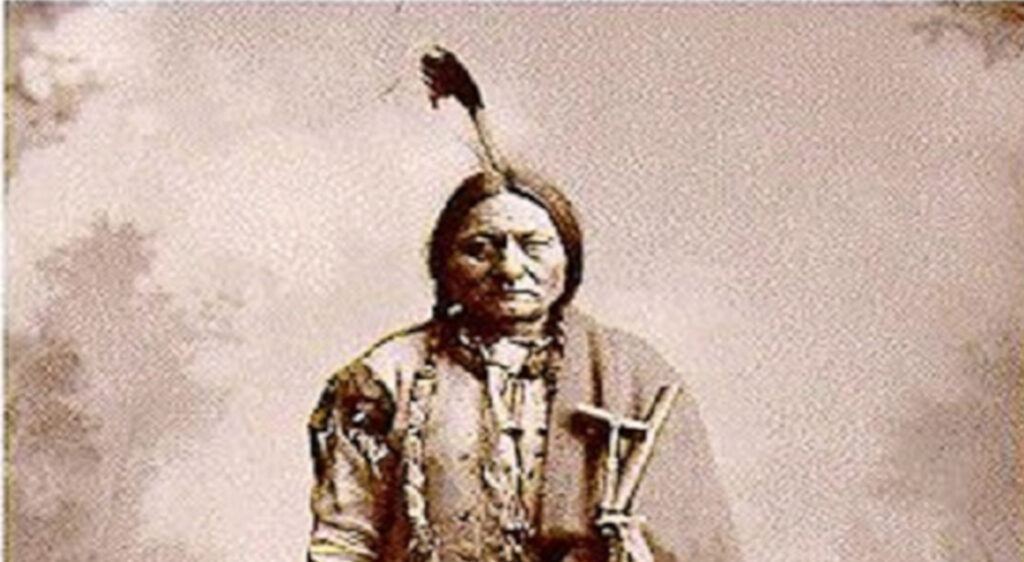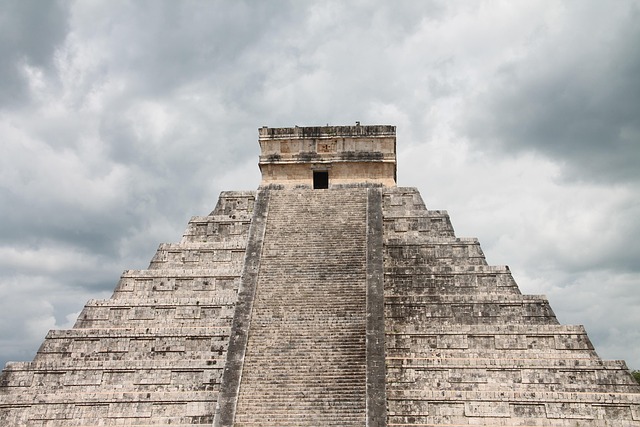Sitting Bull is often remembered as the defiant Lakota Sioux chief who stood victorious at the Battle of the Little Bighorn in 1876. Yet this popular image—of a fearless warrior defeating Custer—is only a fragment of a far deeper, more complex life. Tatanka Iyotake, known to history as Sitting Bull, was not only a battle-hardened leader but a mystic, a diplomat, a spiritual man.
A Name Rooted in Reverence
Born around 1831 near the Grand River in present-day South Dakota, Sitting Bull’s birth name was Jumping Badger. He earned the name Tatanka Iyotake (“Buffalo Bull Who Sits”) after a courageous act in battle as a young man, symbolizing strength, immovability, and calm amidst chaos. The “sitting” in his name wasn’t passivity—it was power grounded in spiritual certainty and emotional discipline.
He Was a Skilled Orator and Diplomat
Contrary to the image of a bloodthirsty warlord, Sitting Bull rose to prominence not because he sought glory, but because his people saw in him a rare combination of courage, wisdom, and spiritual depth. He was reluctant to lead, preferring the life of a traditional Lakota hunter. But as U.S. westward expansion intensified, eroding tribal sovereignty and land, Sitting Bull’s people turned to him for guidance. In a time when Native voices were largely suppressed or misunderstood, Sitting Bull’s speeches carried weight. He spoke forcefully against broken treaties and the relentless encroachment of settlers. His words combined spiritual authority with a keen sense of justice, reminding U.S. officials of their repeated betrayals and urging respect for Lakota sovereignty.
He Didn’t Lead the Battle of Little Bighorn
Sitting Bull is often mistakenly thought to have been the main military leader at the Battle of Little Bighorn in 1876, but he was not directly involved in the battle. He was in camp performing a religious ceremony when the battle took place. The military leadership was primarily provided by Crazy Horse and other Lakota leaders.
He was a leader who lay down his freedom for the sake of his people’s survival
By the early 1880s, Sitting Bull faced an impossible choice. After years of resisting U.S. military pressure and leading his people in exile in Canada, starvation and cold began to take their toll. Buffalo herds—once the lifeblood of the Lakota—had vanished, driven to near extinction by commercial hunters and U.S. policies designed to cripple Native independence. The Canadian government, sympathetic but constrained, could no longer support the Lakota refugees. His people were growing sick and hungry.
Sitting Bull, a man who had never bowed to the U.S. government understood that continued resistance would now lead to annihilation—not just of warriors, but of women, children, and elders.
In 1881, after four hard years in Canada, Sitting Bull made the agonizing decision to surrender to U.S. forces at Fort Buford. He arrived not as a broken man, but as a leader willing to lay down his freedom for the sake of his people’s survival.
“I am the last man of my tribe to surrender. I am the last man to give up my rifle.”
– Sitting Bull, upon surrender –
He knew what awaited him: confinement, surveillance, humiliation, and forced assimilation. But he also knew that if he did not return, his people would die. In surrendering, he gave up his independence, his way of life, and much of his power—but he preserved the lives of hundreds of Lakota.
He Was a Skilled Horse Trainer and Animal Lover
Among the Lakota, horses were not just transportation—they were family and symbols of wealth, status, and spiritual power. Sitting Bull was renowned for his exceptional horsemanship and his ability to tame wild horses. He understood horses as sentient beings with their own spirits, deserving respect and care. His favorite horse, often described as a striking white steed, was more than a mount; it was a partner in ceremonies and battles alike. This bond reflected his broader worldview, where nature and animals held sacred roles in the balance of life.
He Never Signed a Treaty with the U.S.
During an era when many Native leaders were pressured or coerced into signing treaties that ceded vast lands, Sitting Bull stood apart by refusing to sign any. The 1868 Treaty of Fort Laramie, which attempted to confine the Lakota to a reservation and relinquish their sacred Black Hills, was rejected outright by Sitting Bull. He saw these agreements as unjust and illegitimate, made by governments that routinely broke their promises. His refusal made him a symbol of resistance and a “problem” in the eyes of U.S. Indian agents, who viewed his non-compliance as dangerous defiance.
He Adopted a White Child
One of the lesser-known stories about Sitting Bull is his adoption of a white orphan boy, sometimes identified as James or Johnny Reilly. The circumstances vary in different accounts, but what stands out is Sitting Bull’s compassion and openness to bridging cultural divides. The boy was cared for as part of Sitting Bull’s family, learning Lakota ways and participating in tribal life. This adoption highlights Sitting Bull’s humanity and the complexity of Native and settler relations, challenging stereotypes that portray Native leaders solely as warriors or adversaries.
He Was Under Constant Surveillance by Indian Agents
Following his surrender and relocation to the Standing Rock Reservation, Sitting Bull lived under near-constant watch. Indian agents, fearful of his influence, monitored his correspondence, controlled his visitors, and frequently reported on his activities. In the 1890s, a spiritual revival known as the Ghost Dance swept through Native American reservations, promising a miraculous return of lost lands and the disappearance of white settlers. U.S. authorities, fearing an uprising, cracked down harshly. Though Sitting Bull was not a direct participant, they viewed him as a symbol of resistance. In December 1890, while police attempted to arrest him at Standing Rock Reservation, he was shot and killed during a chaotic skirmish—murdered by his own people, many of whom had been co-opted as Indian police.
He Practiced Moon-Based Calendrical Tracking
The Lakota measured time differently from Europeans, relying on lunar cycles with each moon named for natural phenomena or seasonal changes—like “Moon of the Ripe Cherries” or “Moon When the Leaves Turn.” Sitting Bull, as a keeper of tradition, used these lunar markers to track events, seasons, and ceremonies. This method preserved their history orally, ensuring important moments were remembered not by calendar years but through the cycles of nature. His knowledge was so precise that historians studying Lakota oral traditions have used these moon names to date historical events accurately.
He Was Mocked in the Press—But Used That to His Advantage
When Sitting Bull joined Buffalo Bill’s Wild West Show, many newspapers portrayed him dismissively as a quaint relic or savage curiosity. However, Sitting Bull understood the power of the emerging media landscape. By performing in his traditional regalia and signing autographs, he controlled his image and reached audiences who otherwise would never hear Native voices firsthand. He used this platform to subtly advocate for his people and maintain cultural pride. This savvy media engagement is a testament to his adaptability and resilience in the face of cultural marginalization.
He Had Deep Knowledge of U.S. Politics
Despite the isolation and oppression, Sitting Bull remained informed about U.S. politics. He knew the names of presidents, generals, and Indian commissioners, often commenting on their promises and betrayals. His description of politicians as “talking chiefs” reflected his skepticism about their words lacking true action or honor. This political awareness allowed Sitting Bull to navigate a difficult landscape, balancing resistance with occasional diplomatic engagement. It also underscores his intelligence and worldliness beyond what many settlers assumed.
His Drawings and Ledger Art Survive
Sitting Bull create ledger art — a form of narrative drawing created using paper and pencils introduced by traders and soldiers. These drawings depicted scenes of battles, hunts, ceremonies, and visions. Sitting Bull’s artworks survive in museums and collections, offering insight into how he and his people saw their own history and spirituality. The art combines traditional symbolism with new materials, blending the old and new worlds during a time of upheaval.
He Was Baptized… Possibly Against His Will
In late 1890, Catholic missionaries claimed to have baptized Sitting Bull, giving him the Christian name “Nicholas.” This event remains controversial. Some suggest the baptism was performed without Sitting Bull’s full consent or understanding, part of missionary efforts to assimilate Native Americans forcibly. Others believe Sitting Bull, facing immense pressure, may have accepted baptism pragmatically. Regardless, his core spiritual identity remained rooted in Lakota traditions until his death, reflecting the complex collision of indigenous and colonial religions.



